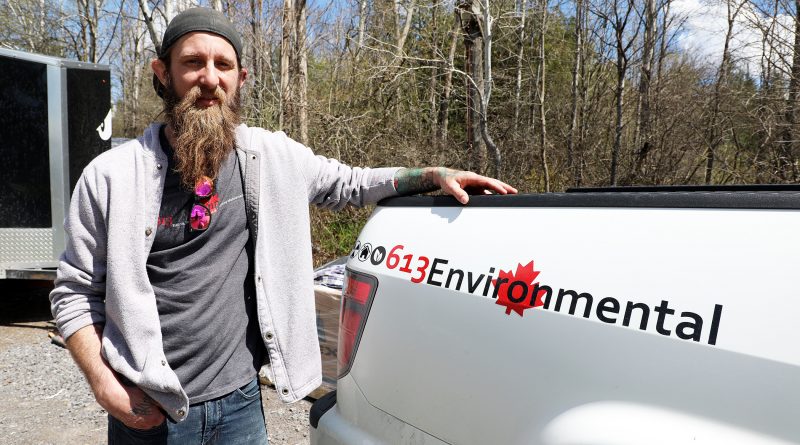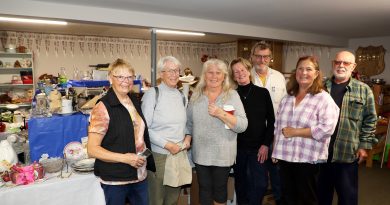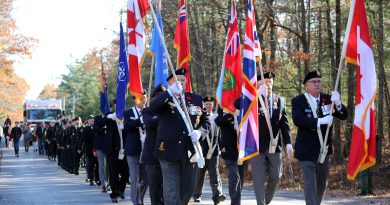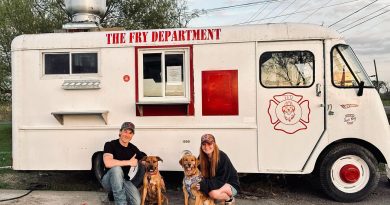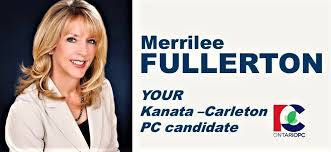613 Environmental on radon removal
KINBURN – Radon is a naturally occurring colourless, odourless, tasteless gas that’s also radioactive.
Radon is a by-product of uranium released when it breaks down in soil or rock. It’s the leading cause of lung cancer amongst non-smoking Canadians, and second overall. And it’s found in every Canadian home.
The good news is small amounts flowing freely out of your house are not considered dangerous and technology has advanced that testing for radon is not cost prohibitive.
According to the Canadian government levels, calculated in becquerels per cubic metre, more than 200 Bq/m3 are considered dangerous.
A couple of months ago two Carp area residents who did not want to be identified met West Carleton Online at Alice’s Village Café to talk about the issue. Both recently did radon testing at their homes. Testing over time, 90 days or more, provides a more accurate reading as levels can change rapidly depending on a variety of factors.
The two West Carleton residents did not want to be identified, but they spoke of the testing they had been doing in their own homes and their friends and neighbours’ homes as well. Both were shocked at how many of the homes they tested showed results greater than 200 Bq/m3.
Both decided to purchase radon mitigation systems for their homes, and both of them purchased the systems locally.
Enter Kinburn’s Gordon Gillespie of 613 Environmental. His company focuses on radon measurement and mitigation, and lately he’s been busy with that.
“That’s my bread and butter,” Gillespie told West Carleton Online from his Limestone Road farm. “We do a bit of handyman stuff and property maintenance, but radon has taken up a lot of that time.”
Gillespie is fully certified to both test for radon and install mitigation devices. He has a lot of real-world experience too.
Before starting his own business, Gillespie was in the environmental consulting services working for Pinching Environmental in the hazardous materials, indoor air quality and microbes division.
In 2015 Gillespie was certified in radon testing and mitigation through the Canadian National Radon Proficiency Program (CNRPP) and renewed his certification in 2017. Gillespie was working for the Town of Arnprior Public Works Department while building his skills and training.
“I kind of built in the background while I worked for the town,” Gillespie said. “When COVID hit in 2020, I transferred to my business full time. It’s been pretty busy since then.”
One of the reasons, for those who remember the outset of COVID, many people were working from home and in general spending much more time in their house.
“I think they started getting concerned with their air quality,” Gillespie said. “It can collect, and after a long exposure, 3,200 people per year die from radon-induced cancer.”
While the Canadian government says more than 200 Bq/m3 is dangerous, the World Health Organization puts the number at 100 Bq/m3.
“There’s really no safe level,” Gillespie said. “I tell people, pick your poison. We’re going to get those levels as low as possible.”
While every house is a little different, mediation usually involves digging a small, roughly five-gallon pit under the house for the radon to collect, installing a fan and exhaust system to transfer that air safely out of the house and in to the atmosphere. Other cracks and holes in the basement are then sealed and it is also important to do this in a way that doesn’t affect the homeowner’s heating or cooling expenses.
“What you’re looking for are cracks in the foundation and floors and sealing those,” Gillespie said. “You want to get rid of the radon below your house, but you want to make sure you are not getting rid of heat or cool air the owner is paying for.”
Gillespie says mediation systems generally run about $2,000 to start, but some things can affect that. The amount of sealing needed, crawl spaces might need a membrane, the distance between the suction hole to the exhaust can drive the cost up. Gillespie does provide free estimates.
“I try to give people a different look,” he said. “Usually, by the time I’m there, they already know they have a radon issue. I’m cheap so I like to save people money. I’ll push them to where they can get reputable, cheaper detectors. Phone calls and emails are free. I treat every house as if it is my own.”
Gillespie says the CNRRP even developed a map that provides information on radon test results by neighbourhood.
Gillespie says there is certainly the potential for high radon counts in West Carleton.
“Carp, Dunrobin Shores, Vydon Acres, MacLaren’s Landing, wherever there are rivers and rocks there seems to be higher levels,” Gillespie said.
While Gillespie does testing as part of his business, he says residents can test on their own and testing kits are available at local hardware stores.
“Older houses are leaky and have a lot of fresh air moving through,” Gillespie said. “You can mitigate that just by opening the window. That doesn’t work in winter. Newer houses can be a little more sealed. Generally, we find testing in the winter is more accurate. Health Canada recommends the long-term test, from 91 days to a full year. You want to catch it when the levels are potentially at their highest, which is usually in the winter months.”
Gillespie says, while new houses are often better sealed which trap radon in them, really new homes are now built with radon taken in to consideration.
“Some have piping installed so someone can come along and just add a fan,” Gillespie said.
For more information on radon and 613 Environmental, you can visit Gillespie’s website here.






